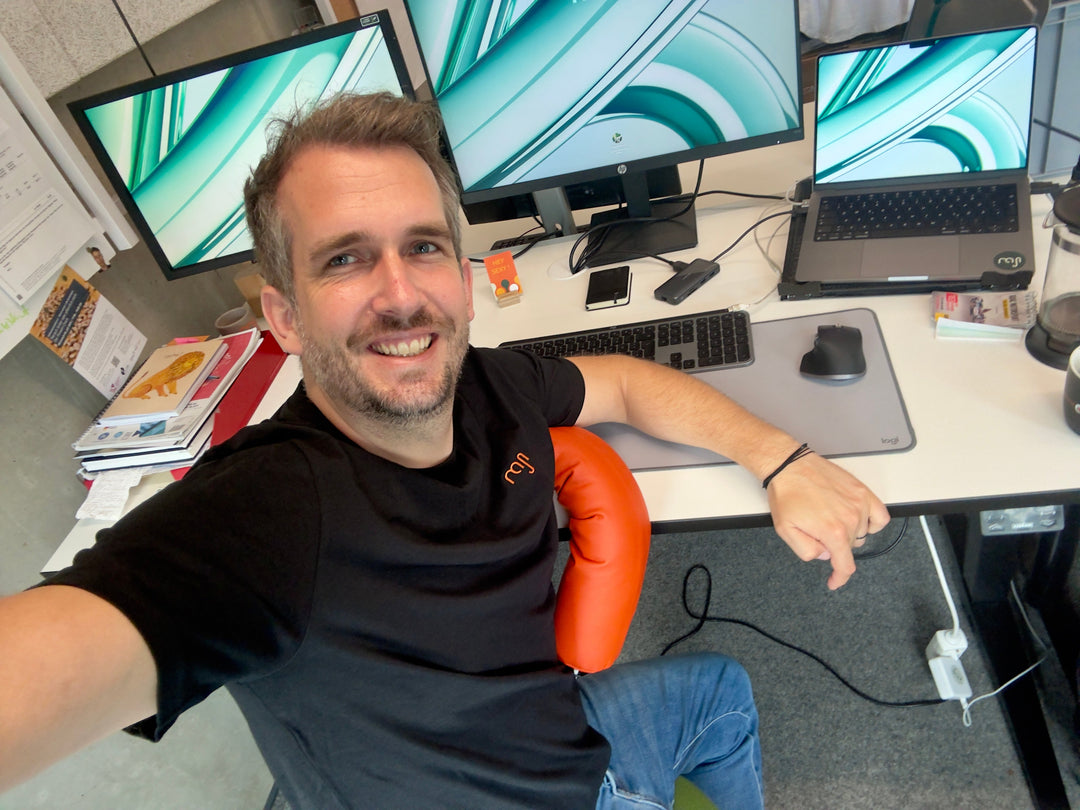Ergonomics by itself is not enough - how do I really work healthily?

Introduction
In our modern working world, we spend a lot of time sitting – whether in the office, working from home, or on the go. But have you ever wondered how poor posture can affect your long-term health and productivity?
You've probably experienced this: At first, you don't even notice it. Then you feel a slight ache. A few hours later, that pain in your neck or back is still there. And then? You need a solution, quickly! But often it's not the big changes, but the small things that make the difference in the long run.
A good indicator of this is whether you're sitting comfortably. The body's own feedback system is simply brilliant for this, if you understand it a little. If your body doesn't tell you after 2-4 hours that everything is burning, pulling, stinging, or tingling, you're on the right track.
In this article I write about why your body determines how productive you are.
Why is ergonomics so important?
An ergonomic workplace is far more than just unattractive, mediocre furniture for people with health problems. It's an investment in your health and productivity. Did you know that poor posture can drain up to 40% of your performance reserves?
It makes sense to think about the environment you sit in every day. If you can work in an environment that's optimally adapted to your body, you'll not only prevent acute tension but also reduce the long-term risk of musculoskeletal disorders. Modern ergonomic solutions are designed to put your body in a natural, relaxed position and should also be visually pleasing. Only then will you be more likely to use them regularly.
Everything at the desk?
If you sit back for a moment and close your eyes, does every task you perform really require a dedicated desk? You could stand while making phone calls, lean back while reading, and why not stretch your legs while researching? Your workspace should adapt to your tasks—not the other way around.
If your work from home allows it, look for places where you could or would like to work. Ultimately, it's all about finding a suitable place for your current activity/task, where you can be productive and relaxed. This isn't always a traditional desk. However, there are many great tools that make it possible to be productive in other "nicer" locations. Where would you like to work, and what do you lack to do so?
What type of person am I at the desk?
Everyone has their own way of working – and this influences how we best sit and move. In physiotherapy, we sometimes say that everyone functions in their own dysfunction. This means that your body shapes itself according to your habits and adapts. It does this to save energy. For example, if you always carry your bag over your right shoulder, it will eventually slip off your left side because your body automatically pulls your right shoulder higher. You become “crooked”. Your body adapts to your habits. It’s the same when you work in an office job. While some people like to sink comfortably into their chair, others need a clear structure. But what type of work personality are you?
🔹 The Chaotic One: Your desk looks like a creative battlefield, but you still find everything? Flexibility is your thing, but often you only notice after hours that your sitting posture resembles a question mark.
🔹 The perfectionist: Everything has its place – and it has to be ergonomic. But sometimes you sit so stiffly that you only realize how tense you are after work.
🔹 The Restless One: Sitting is a test of patience for you. Sometimes on the edge of your chair, sometimes cross-legged – you need movement and a solution that doesn't restrict you. Something where you can fidget freely but still work healthily? I sometimes have that too.
🔹 The Focus Worker: You're so focused that you often don't even notice you're sitting there—until hours later, your back starts to hurt. Your environment needs to support you without distracting you.
🔹 The Dreamer: Your creativity flows best when you're comfortable. But that sometimes leads to your body adopting postures that are anything but ergonomic.
🔹 The backrest bender ( connoisseur )
How far can you recline the backrest? Lean back, think, relax—you practically invented the home office. Comfort is your mantra, but your neck sees it differently. Your head tilts forward, and eventually, the first pain sets in. It's actually one of my favorite positions, only without the problems ;-).
No matter what type you are – there are solutions that meet you exactly where you are (or are sitting).
The "right" or efficient ergonomics must support you individually – and that's precisely why your workstation should suit your work style. Working should feel good – and if you've read this far, you're probably someone who values that.
If you want more of this:
📩 Sign up for our blog newsletter and stay up to date on all things healthy workplace. Or check out our other posts – they cover topics related to health and work. If you'd like to read about a specific topic, let me know.
Because let's be honest: Your back will thank you. See you soon, your Vincent







Leave a comment